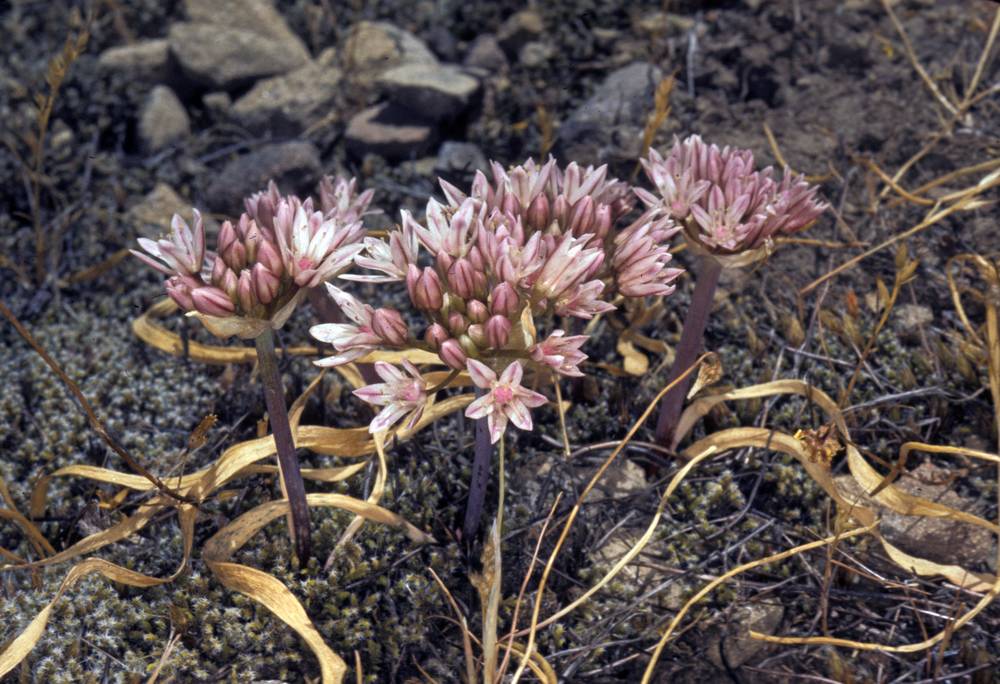Allium constrictum
Allium
onion
usually withering from tip by anthesis, usually persistent, 1–12;
basal;
blade usually linear; terete, channeled, or flat (keeled in A. triquetrum and A. unifolium); straight or more or less falcate, usually not petiolate.
usually persistent; terete, flattened, or triangular.
umbellate;
flowers sometimes replaced by bulbils;
pedicels erect or spreading (lax in A. triquetrum), subtending spathe bracts conspicuous; more or less fused, membranous.
erect (pendent in A. triquetrum);
tepals 6; in 2 similar whorls; more or less distinct; petal-like, usually persistent;
stamens 6;
filaments usually broad at base, fused into ring, glabrous (papillose to ciliate proximally);
ovary superior, 3-lobed, sometimes crested; crests obscure to prominent;
style 1;
stigma usually narrowly capitate to more or less 3-lobed.
loculicidal capsules.
black; smooth and shiny or minutely roughened.
Allium constrictum
Allium
Mostly Northern Hemisphere. 550–700 species; 34 species treated in Flora.
In the recent splitting of Liliaceae sensu lato (Stevens 2012), Allium was classified within the family Amaryllidaceae, in the order Asparagales. All members of Allium smell more or less like onions or garlic and are more or less edible, though not always pleasant tasting. Bulb coat reticulations are frequently important in identification; they are best viewed on the inner surface of the outer coats. Descriptions of reticulations assume 10× magnification. Allium membranaceum (papery onion) was collected in Jackson County in 2010. It may be a waif. This species is known to occur in California. Allium cepa (cultivated onion) occurs as a waif near onion fields and along dirt roads on which they are transported. It is also known from the wild in California and Washington.
Nick Otting, Richard Brainerd, Barbara Wilson


